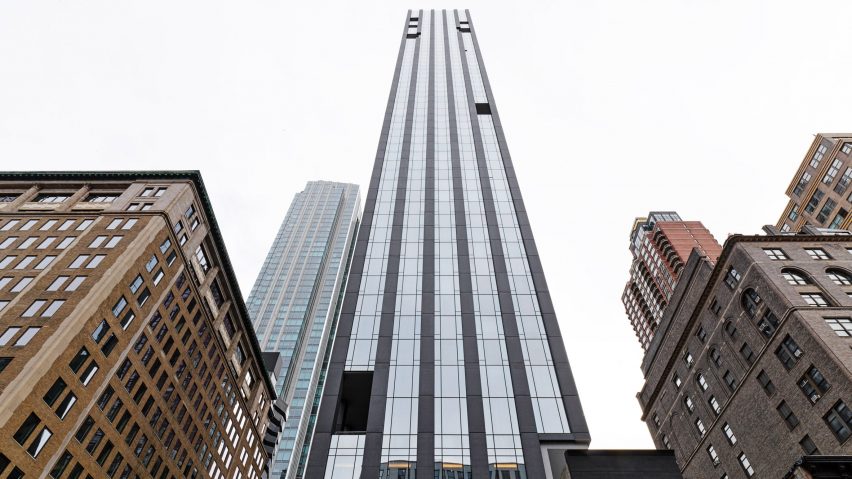
Rieder concrete panels adorn Fifth Avenue skyscraper by Rafael Viñoly
Promotion: glass-fibre-reinforced concrete panels by Austrian cladding brand Rieder animate the facade of the 277 Fifth Avenue skyscraper in Manhattan, New York City.
More than 1,200 square metres (13,000 square feet) of concrete wall panels adorn the 55-storey residential tower, which was completed by late architect Rafael Viñoly in 2018.
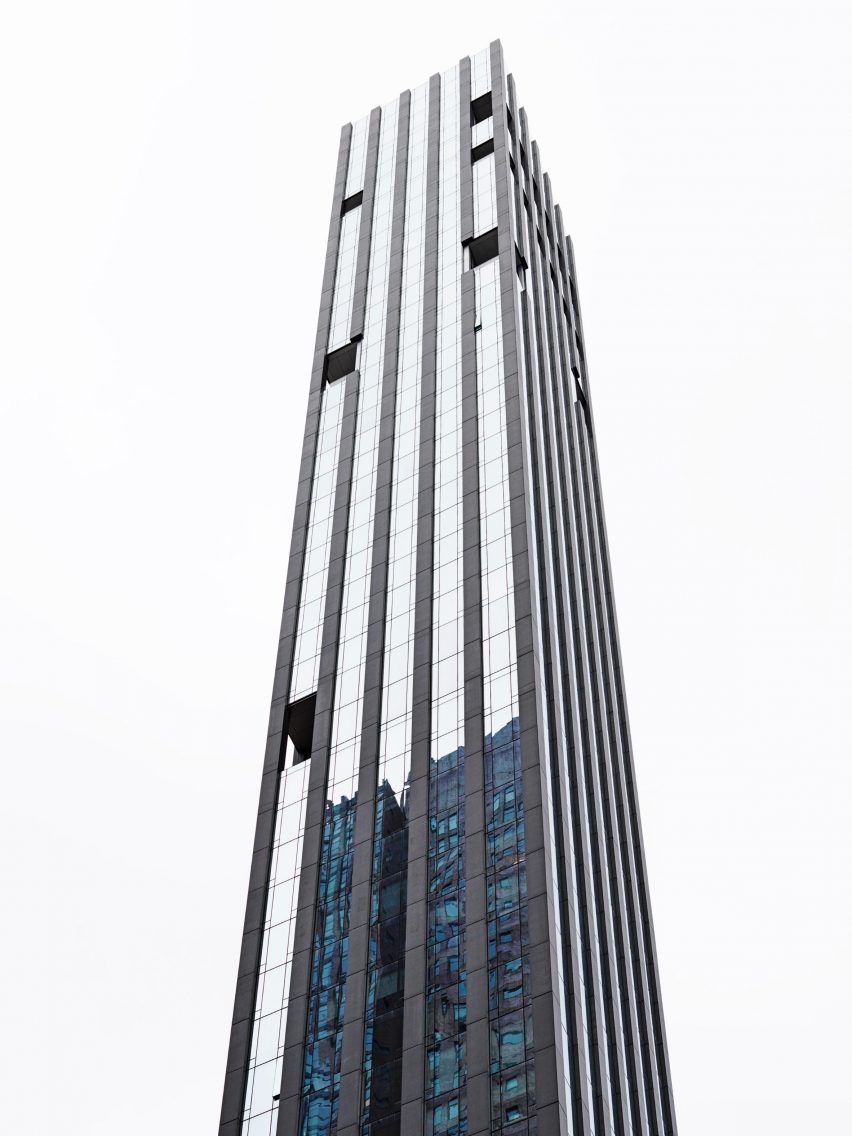
Rieder's 13-millimetre-thin facade product, or "concrete skin", has been used by Rafael Viñoly Architects to create tall, slender columns up the exterior of the building.
Projecting outwards as they rise 205 metres, these columns also frame large portions of glazing outside each apartment and have become a defining feature of the 277 Fifth Avenue tower.
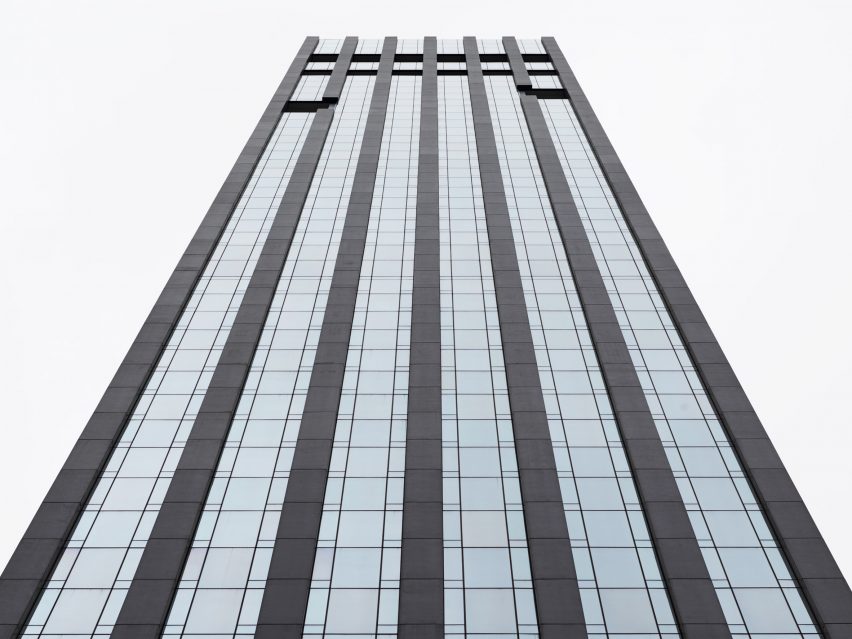
"One of the main features of the building is the reduced yet striking facade of glass and dark concrete pilasters," said Rieder.
"The large glass surfaces are structured and framed by longitudinal concrete ribs. The pronounced verticality creates attractive highlights on the outer shell."
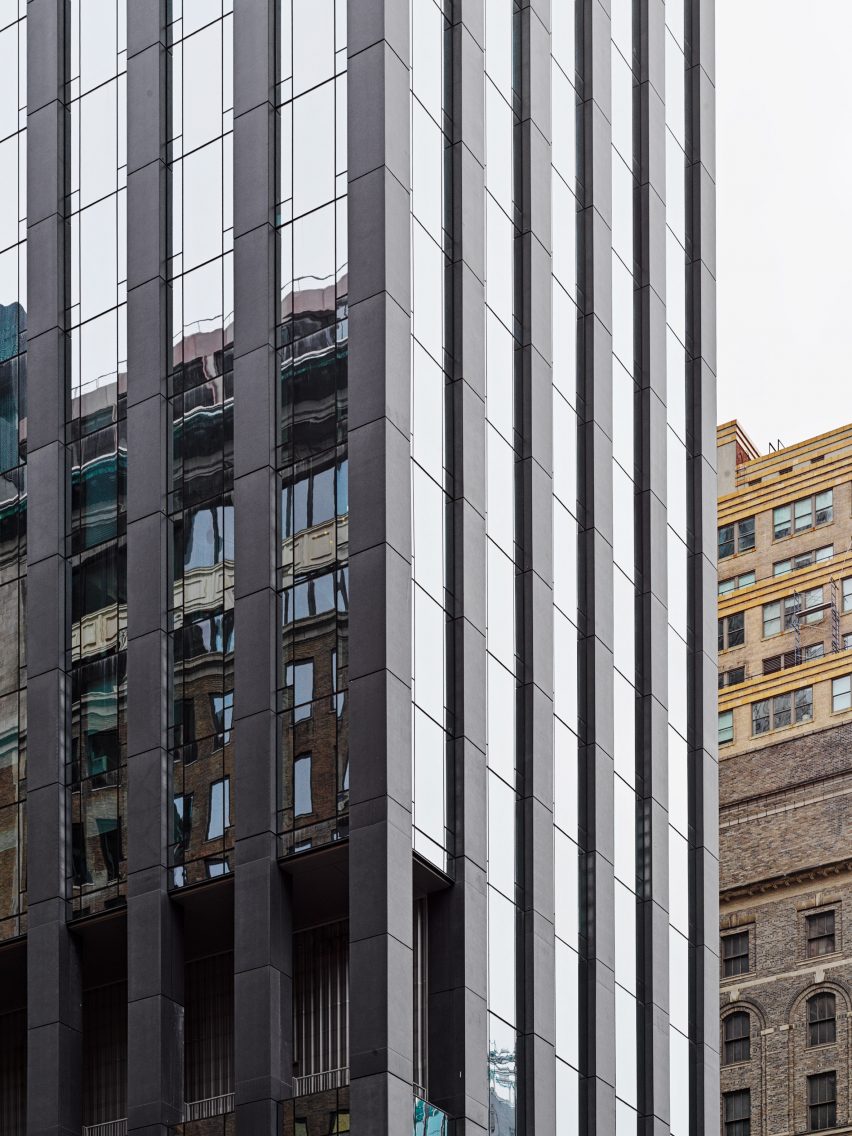
The dark-coloured concrete panels used at 277 Fifth Avenue were developed by Rieder as a low-maintenance, durable and easy-to-install building material.
"It was the panels' low maintenance requirements, durability, comparatively low weight, ease of installation and their sustainability that convinced the internationally renowned architect Rafael Viñoly of the 13-millimetre-thin facade panels," said the company.
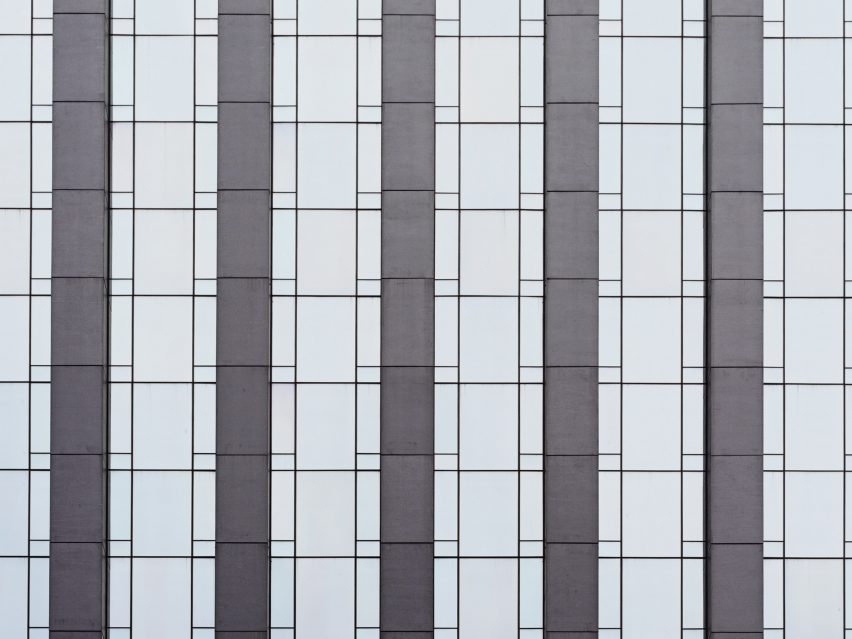
The concrete panels are available in several different colours and shapes, as well as with different surface finishes and textures.
Recently, Rieder developed facade panels with reduced cement content, which ensure a lower carbon footprint than traditional concrete facade panels, according to the company. This is through the use of pozzolanic materials – clays, shales and rocks of volcanic origin – which are used as a substitute for high-carbon cement, helping to minimise carbon dioxide emissions in their production.
"Rieder has made it its mission to reimagine the world of concrete," said Rieder. "The delicate-looking concrete solutions for the building envelope are available for a wide range of applications."
"It sets even more sustainable standards and makes the durable, large and versatile elements an absolute game changer for the construction of high-rise buildings worldwide," the company continued.
For more information about Rieder and its glass-fibre-reinforced concrete panels, visit the company's website.
The photography is courtesy of Rieder and Ditz Fejer.
Partnership content
This article was written by Dezeen for Rieder as part of a partnership. Find out more about Dezeen partnership content here.